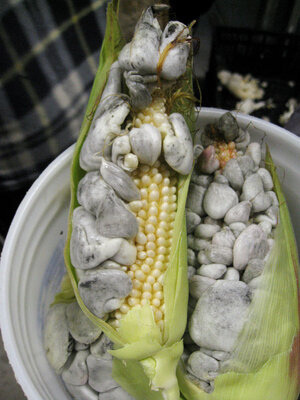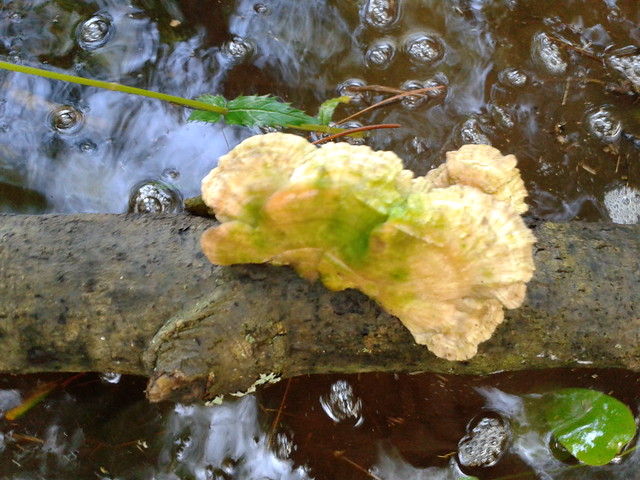It’s good to get a little exercise.
![[Log, Fungus, Yellow Dog, Sycamore]](http://www.okraparadisefarms.com/pictures/2021-02-20--beaver-ponds-yellow-dog-gretchen-sycamore/many.jpg)
Log, Fungus, Yellow Dog, Sycamore
Gretchen likes heaving logs under the red maples.
Beaver Pond
Birds and dogs.
Fungus
We could get it down with a ladder.
But we left it there to grow again.
This moss grows all the time.
Woods
In her habitat.
![[Gretchen in the woods with vines]](http://www.okraparadisefarms.com/pictures/2021-02-20--beaver-ponds-yellow-dog-gretchen-sycamore/20210220_130206.jpg)
Gretchen in the woods with vines
Yellow Woods Dog
Yellow Dog knows all the woods paths.
Upper Pond
This is also a beaver pond now, only larger than the others.
Yellow Pond Dog
Dogs like mud.
Sycamore
That tree was knee-high when we transplanted it.
-jsq
![[Gretchen and her log]](http://www.okraparadisefarms.com/pictures/2021-02-20--beaver-ponds-yellow-dog-gretchen-sycamore/20210220_123642.jpg)
![[Red maple and beaver creek]](http://www.okraparadisefarms.com/pictures/2021-02-20--beaver-ponds-yellow-dog-gretchen-sycamore/small/20210220_122623.jpg)
![[Gretchen and a beaver pond]](http://www.okraparadisefarms.com/pictures/2021-02-20--beaver-ponds-yellow-dog-gretchen-sycamore/20210220_124046.jpg)
![[Beaver pond]](http://www.okraparadisefarms.com/pictures/2021-02-20--beaver-ponds-yellow-dog-gretchen-sycamore/small/20210220_124028.jpg)
![[Wide beaver pond]](http://www.okraparadisefarms.com/pictures/2021-02-20--beaver-ponds-yellow-dog-gretchen-sycamore/small/20210220_124041.jpg)
![[Gretchen and the lion's mane]](http://www.okraparadisefarms.com/pictures/2021-02-20--beaver-ponds-yellow-dog-gretchen-sycamore/20210220_124740.jpg)
![[Sphagnum moss]](http://www.okraparadisefarms.com/pictures/2021-02-20--beaver-ponds-yellow-dog-gretchen-sycamore/small/20210220_125448.jpg)
![[Old stob; might be catface]](http://www.okraparadisefarms.com/pictures/2021-02-20--beaver-ponds-yellow-dog-gretchen-sycamore/small/20210220_125620.jpg)
![[Mushroom log]](http://www.okraparadisefarms.com/pictures/2021-02-20--beaver-ponds-yellow-dog-gretchen-sycamore/small/20210220_130103.jpg)
![[Mushrooms]](http://www.okraparadisefarms.com/pictures/2021-02-20--beaver-ponds-yellow-dog-gretchen-sycamore/small/20210220_130107.jpg)
![[This way?]](http://www.okraparadisefarms.com/pictures/2021-02-20--beaver-ponds-yellow-dog-gretchen-sycamore/20210220_130440.jpg)
![[Nope.]](http://www.okraparadisefarms.com/pictures/2021-02-20--beaver-ponds-yellow-dog-gretchen-sycamore/small/20210220_130442.jpg)
![[That way.]](http://www.okraparadisefarms.com/pictures/2021-02-20--beaver-ponds-yellow-dog-gretchen-sycamore/small/20210220_130444.jpg)
![[Quite full]](http://www.okraparadisefarms.com/pictures/2021-02-20--beaver-ponds-yellow-dog-gretchen-sycamore/20210220_130532.jpg)
![[How about a boardwalk right through here?]](http://www.okraparadisefarms.com/pictures/2021-02-20--beaver-ponds-yellow-dog-gretchen-sycamore/small/20210220_130636.jpg)
![[Gretchen at the pond edge]](http://www.okraparadisefarms.com/pictures/2021-02-20--beaver-ponds-yellow-dog-gretchen-sycamore/small/20210220_131153.jpg)
![[Yellow Dog in the pond]](http://www.okraparadisefarms.com/pictures/2021-02-20--beaver-ponds-yellow-dog-gretchen-sycamore/20210220_131306.jpg)
![[Yes, that's me, Yellow Dog]](http://www.okraparadisefarms.com/pictures/2021-02-20--beaver-ponds-yellow-dog-gretchen-sycamore/small/20210220_131331.jpg)
![[Gretchen and her Sycamore]](http://www.okraparadisefarms.com/pictures/2021-02-20--beaver-ponds-yellow-dog-gretchen-sycamore/20210220_131614.jpg)
![[Tall tree]](http://www.okraparadisefarms.com/pictures/2021-02-20--beaver-ponds-yellow-dog-gretchen-sycamore/small/20210220_131620.jpg)
![[She likes that tree]](http://www.okraparadisefarms.com/pictures/2021-02-20--beaver-ponds-yellow-dog-gretchen-sycamore/small/20210220_131544.jpg)




